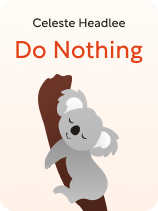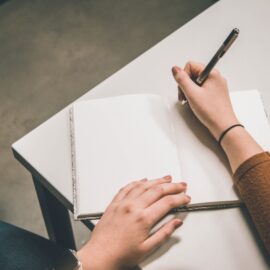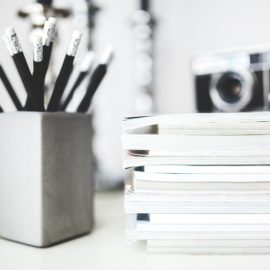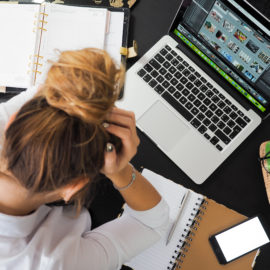

This article is an excerpt from the Shortform book guide to "Do Nothing" by Celeste Headlee. Shortform has the world's best summaries and analyses of books you should be reading.
Like this article? Sign up for a free trial here.
How often do device notifications interrupt you? Do you know how technology messes with your physiology?
In today’s fast-paced world, our lives increasingly revolve around productivity, efficiency, and work. It’s normal for people to answer emails during dinner and pack their days with as many tasks as possible. In Do Nothing, Celeste Headlee says the obsession with productivity has led to technology addiction.
Read more to learn how our work-obsessed culture has led to an unhealthful overuse of technology.
Overuse of Technology
One downside of prioritizing productivity above all else is that it tends to make technologies that enable productivity—such as smartphones—an integral part of people’s day-to-day lives. Headlee argues that, in turn, this overuse of technology has a slew of negative consequences.
#1: It Blurs the Line Between Work & Personal Time
One major impact of the frequent use of technology is that it allows work to seep into people’s personal lives when they’re off the clock. Smartphones and laptops enable people to stay connected 24/7, and as a result, there’s more pressure to respond to work emails and phone calls even when someone is meant to be enjoying time off. This means that there’s less separation between on-the-job time and off-time, and many people feel like they can never fully relax.
(Shortform note: A counterargument to these points is that technology also provides benefits such as the flexibility to work from home and adapt your work schedule to your other needs. For example, by working from home, you could spend less time commuting to work and more time with your family. To preserve these benefits and keep technology from interrupting your personal life, some experts recommend techniques to establish boundaries between work time and off-time even if you work from home. For example, try doing a daily routine when you start and stop work to delineate the transition and having a specific physical area that you use for work (and if possible, closing the door to your office after hours).)
#2: It Interferes With Sleep Patterns
Another impact of the constant use of technology is that it interferes with sleep patterns because the blue light emitted from screens tricks your brain into thinking that it’s daytime (and therefore time to be alert). This hinders the release of the hormone melatonin, which helps you sleep.
#3: It Causes Stress
Headlee says that digital device notifications stimulate a physiological fight-or-flight response, which releases stress hormones. Simply having your smartphone near you, and therefore having the possibility of receiving a notification, can distract you from being present.
#4: It Causes Social Isolation
Lastly, Headlee writes that the frequent use of social media is (ironically) causing social isolation. Instead of having deeper relationships with a smaller circle of friends, people are replacing those relationships with an overwhelming number of superficial, digital connections. Headlee says that a person’s social media network tends to include too many people to genuinely empathize and keep in contact with. In addition, the digital interactions are less intimate than in-person and vocal interactions, so the countless digital exchanges that people have daily are less emotionally gratifying.
| Attention Economy in the Age of Information In How to Do Nothing, Jenny Odell links these negative effects of technology to the rise of the attention economy, or the monetization of people’s attention through apps, social media, ad-supported websites, and so on. Unlike the process of industrialization, which Headlee argues led to a change in the type and amount of work people were doing, we’re now in a period of de-industrialization in which economies are shifting away from manufacturing and toward a knowledge- and service-based economy. As a result, companies profit not only from people’s labor and purchases of physical items but also from holding people’s attention as long as possible. Spending excessive amounts of time on technology then exacerbates the problems that Headlee describes: sleep disruption, physiological stress responses to notifications, increased digital communication, and more social isolation. Some of Odell’s practical tips for resisting the attention economy include spending time in nature, learning about the local history of where you live, and taking the time to get to know your neighbors. She also warns that doing a temporary detox or getaway from technology might help reduce your stress in the short term, but it doesn’t eliminate the mindset of viewing time and attention in terms of monetary value. Therefore, it’s also important to increase your awareness of how companies manipulate your attention and resist the urge to monetize your free time. |

———End of Preview———
Like what you just read? Read the rest of the world's best book summary and analysis of Celeste Headlee's "Do Nothing" at Shortform.
Here's what you'll find in our full Do Nothing summary:
- How our fast-paced world is causing us to work less efficiently
- How the culture of overworking has led to social isolation and poor health
- How to embrace true leisure to live a happier and healthier life






